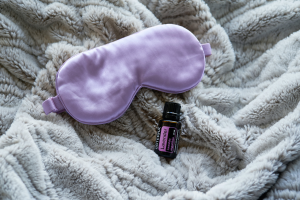 sleepwell has 625 million views on TikTok in the UK and Google Searches for ‘how to sleep well’ have seen a 38% increase in searches in the last month as more and more people are looking for ways to optimise their sleep each night.
sleepwell has 625 million views on TikTok in the UK and Google Searches for ‘how to sleep well’ have seen a 38% increase in searches in the last month as more and more people are looking for ways to optimise their sleep each night.
Experts at Bensons for Beds reveal that, while there is no one singular fix for a great night’s sleep, making an effort to make the optimum circumstances for each of the five senses is the answer to preparing the body and mind for a night of quality sleep.
Bensons for Beds suggests the following for each of the five senses for the best chances at a good night’s sleep:
Taste
Caffeine masks our body’s natural sleep drive and reduces feelings of drowsiness that would typically indicate it’s time for sleep. And while you might think that evening cappuccino won’t hurt, according to Bensons for Beds Resident Sleep Expert, Dr Sophie Bostock: “The half-life for caffeine is around six hours…it can still disrupt the quality of your sleep more than 6 hours later.”
Avoid drinks like tea, coffee, energy drinks and fizzy drinks close to bedtime. Instead, opt for caffeine-free alternatives such as herbal teas or water.
Smell
With candles, humidifiers and oil diffusers, there are a lot of options for creating a soothing ambience through the sense of smell and aromatherapy in the home, but, which are the best scents for a good night’s sleep? Research shows that lavender, chamomile and jasmine are great options to calm an elevated mind and reduce anxiety levels for a relaxing sleep.
Sound
The sounds that relax us can be a very personal choice; while one person may find falling asleep to the sound of the ocean the most relaxing – it may cause others to need the loo. While one person may fall asleep to the loud guitar strings of Brian May, another may prefer the soothing voice of Adele. However, there are certain sounds that have been scientifically proven to help the body prepare for better sleep and these are ones that can regulate the body’s circadian rhythm to relax for sleep.
Dr Sophie comments: “True white noise consists of every frequency of sound that the ear can hear, played at random, at a constant amplitude or intensity. This effectively provides a blanket of sound which can mask other noises.
An alternative to white noise is pink noise, which is similar but with fewer high-pitched sounds and more emphasis on the lower-frequency sounds. Pink noise can be softer, deeper and more soothing than white noise.”
Touch
The temperature we are and the surroundings we have can also impact sleep. Experts say that the ideal room temperature for sleep is 19-21 degrees Celsius. This means making sure your room is cool, but not cold, with the right ventilation. Using temperature-regulating mattresses and bedding can be an easy way to keep your body at the right temperature for sleeping, especially if you’re more prone to getting too hot whether this is due to medications, drinking your tea before bed or even your hormones.
Sight
While a dark room is the best option for sleep, reds, yellows and oranges are the best lighting shades to surround yourself with to prepare the mind for sleep. Spending time within warmer-hued lighting in the hours leading up to bedtime can help regulate our sleeping patterns.
Dr Sophie says: “Light therapy involves sitting or working near a special light therapy box, or SAD lamp, that emits bright artificial light, usually around 10,000 lux, every morning. The light box mimics natural outdoor light, aiming to make up for the reduced exposure to sunlight in the winter. Each lamp will have its own instructions, and it’s worth asking a specialist for advice, but I usually recommend that people sit 1-2 feet from a light box for 20-60 minutes at the same time each morning, to help re-set their circadian rhythms. Most studies suggest that light therapy can be effective within 7 days. Light therapy, with or without antidepressant medication, is often recommended as the first-line treatment approach for SAD (Geoffrey et al 2019).
If you struggle to get out of bed in the morning, a light alarm clock, or dawn simulation alarm clock, which gets gradually brighter before the alarm, may help you to reduce the groggy sleep inertia which some people experience on waking (Gabel et al 2014).”
Choosing to spend time in a particular room can also help you better prepare for a good, restful sleep. Particular decors and colours are good for regulating the body ahead of time. For example, blues can signal calmness, greens are said to reduce stress and more neutral colours can minimise mental distraction.
To learn more about optimising your sleep via your senses visit the Bensons for Beds blog.



